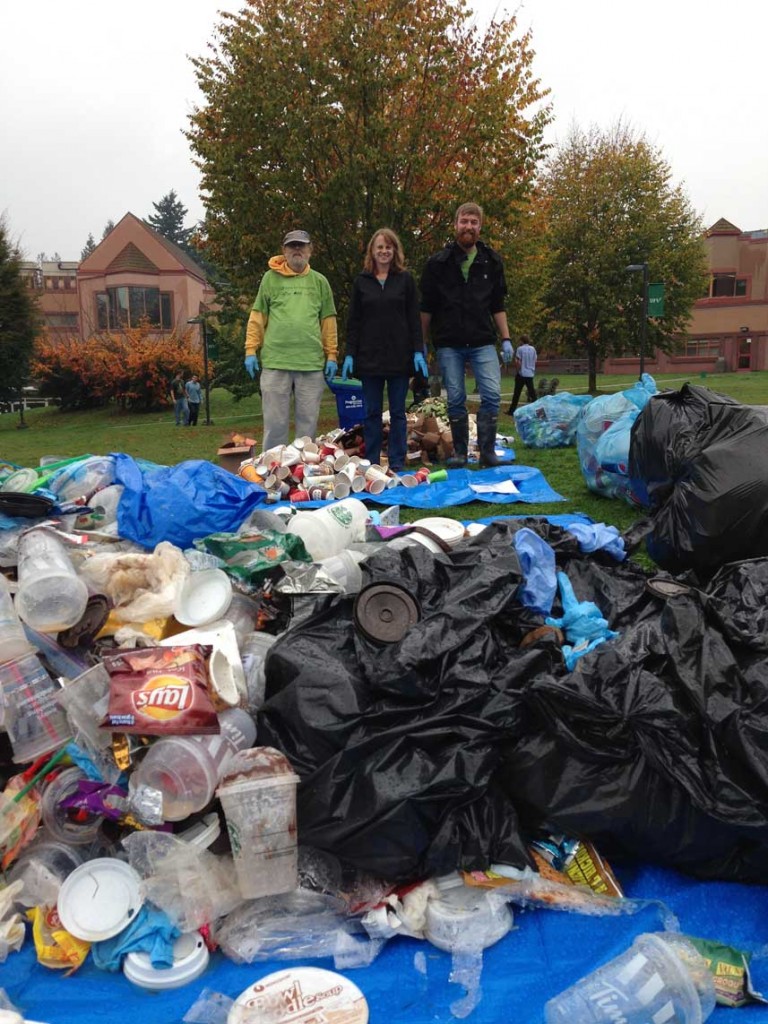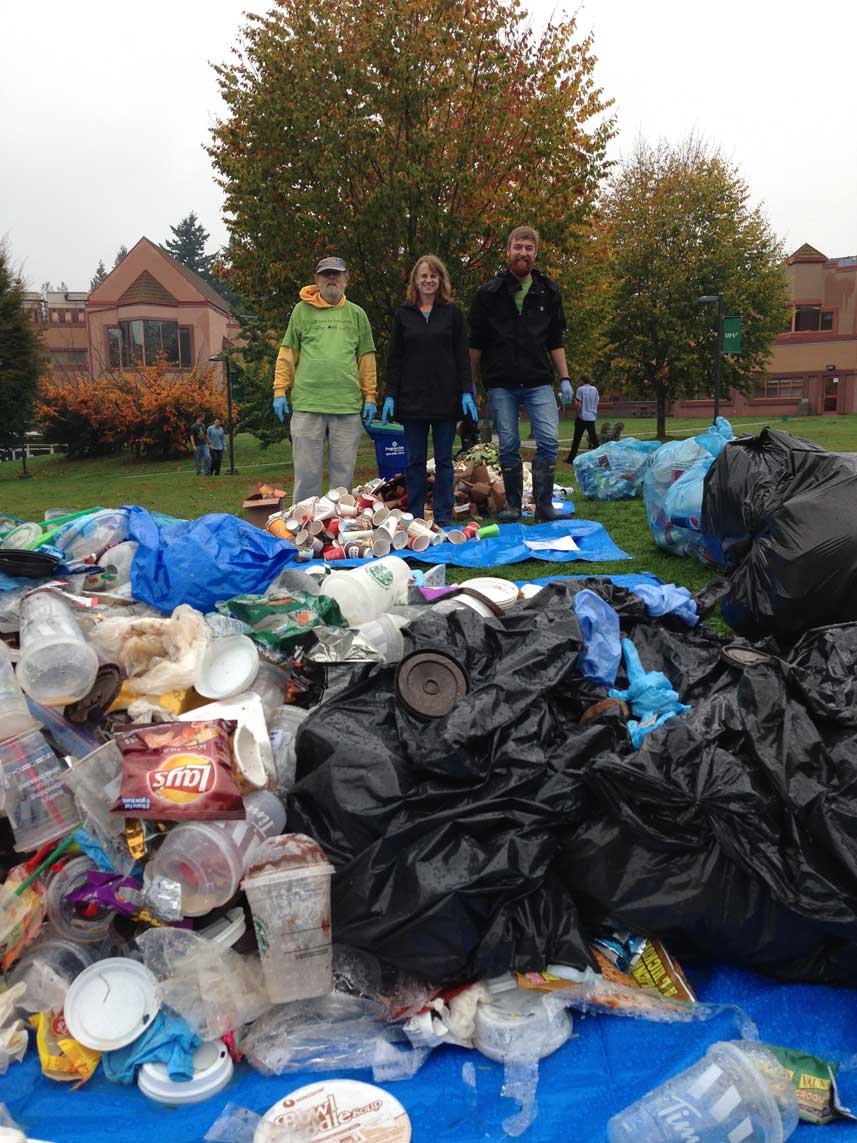
18 per cent of the garbage sorted was true waste, while 22 per cent of the waste was compost, 21 per cent was paper towel, and nine per cent came from disposable coffee cups.
Volunteering students and faculty braved the rain to sort and weigh campus garbage collected from the previous day for UFV’s first ever waste audit last Wednesday, October 7, hosted by the Centre for Sustainability. The goal of the waste audit was to look at how UFV disposes of waste and see if it can be done in a better, more environmentally friendly way.
“We’re going to take some of the garbage that UFV produces on Tuesday … take it out to the green, dump it out, and … get people to basically sort out all this garbage,” facilities sustainability co-ordinator assistant intern Alyssa Bougie explains. Bougie held the event to get a hands-on understanding of how much waste UFV produces.
“There will be about 15 categories of diversion, so there will be metals, and plastics, and stuff like that,” she says. The total waste in each category will then be weighed to find the proportion of the garbage belonging to each category.
“From there, I can kind of give a bit of a financial look and say, ‘If we put more resources into this, could we actually save money even without spending more, and also do better for the environment?’” she says.
Another goal of the waste audit is to make students, faculty, and staff more aware of what happens with their waste.
“I think a lot of people don’t think about it. I mean, I didn’t at all until I started trying to plan this … We throw out a lot of stuff,” Bougie explains. She says that when they sorted the garbage on the green, she hoped to attract the attention of students passing by and get them involved.
Some preliminary numbers from the waste audit show that only 18 per cent of the garbage sorted was true waste, while 22 per cent of the waste was compost, 21 per cent was paper towel, and nine per cent came from disposable coffee cups. Bougie notes that some of these values are skewed, since the rain increased the weight of the paper. After a more sophisticated analysis is done, results will be posted by the Centre for Sustainability.
The Centre for Sustainability has a practices and policies page on the UFV website outlining the waste practices currently in place, including what can be put in paper recycling, bottle and can recycling, and compost. However, Bougie would like to see a more comprehensive waste disposal system put into place at UFV, including more recycling and compost bins spread across the campuses.
SFU and UBC both have Zero Waste campaigns, aiming to make their campuses more sustainable. SFU aims to divert 70 per cent of their waste from landfills by 2015, while UBC aims for 60 per cent diversion by 2016 and 80 per cent by 2020. Both universities installed four-bin waste stations across all their campuses to help with this campaign and to increase student awareness of waste disposal practices. Both SFU and UBC also do waste audits to collect data and see how close they are to their goals.
“I would love it if we could be like SFU and UBC who have really comprehensive systems for all of their waste sorting,” Bougie says. “I think it would be a really good change for UFV. We have lots of energy campaigns here, and saving energy is great — but I think this is more the key issue right now.”




